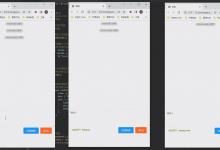1、创建Springboot项目
打开IDEA,通过File -> New -> Project… -> Spring Initializr 创建一个新的Springboot项目

在下一个界面,填入项目名Name,JDK选择8

接着,选择Springboot 2.6.2

点击完成

生成空的Springboot项目,pom.xml文件内容:

2、加入Flowable依赖包
修改pom.xml文件
"properties"属性下加入:
<flowable.version>6.7.2</flowable.version>
注意,请确保Flowable版本与Springboot版本匹配,否则会无法启动。查看Flowable不同版本对应的springboot版本,参考:https://blog.csdn.net/JinYJ2014/article/details/121530632
"dependencies"属性下加入:
<dependency><groupId>org.flowable</groupId><artifactId>flowable-spring-boot-starter</artifactId><version>${flowable.version}</version></dependency>
这个依赖会自动向classpath添加正确的Flowable与Spring依赖。
注意:有时候,依赖JAR无法自动获取,可以右键点击项目,并选择 Maven ->Reload Project以强制手动刷新。
现在可以编写Spring Boot应用了:
import org.springframework.boot.SpringApplication;import org.springframework.boot.autoconfigure.SpringBootApplication;@SpringBootApplicationpublic class FlowableExampleApplication {public static void main(String[] args) {SpringApplication.run(FlowableExampleApplication.class, args);}}
Flowable需要数据库来存储数据。运行上面的代码会得到异常提示,指出需要在classpath中添加数据库驱动依赖。
3、添加数据源
现在添加MySQL数据库依赖:
<dependency><groupId>mysql</groupId><artifactId>mysql-connector-java</artifactId><version>8.0.13</version></dependency>
注意:MySQL依赖包版本根据自己所连接的数据库版本修改,否则可能会连接失败
application.properties文件中添加数据源
spring.datasource.url=jdbc:mysql://127.0.0.1:3306/flowable?characterEncoding=UTF-8&serverTimezone=UTCspring.datasource.driverClassName=com.mysql.cj.jdbc.Driverspring.datasource.username=jinyangjiespring.datasource.password=jinyangjie
应用成功启动后,查看数据库,可以看到,已经自动创建了Flowable表:

注意:如果出现“Caused by: java.lang.RuntimeException: Exception while initializing Database connection”的错误,请确保数据源的配置项正确,并检查MySQL依赖包版本是否匹配
4、REST支持
4.1 添加REST依赖
通常我们的应用会使用REST API。添加下列依赖:
<dependency><groupId>org.springframework.boot</groupId><artifactId>spring-boot-starter-web</artifactId><version>${spring.boot.version}</version></dependency>
<spring.boot.version>2.6.2</spring.boot.version>
下面做个Controller和Service层的简单使用示例,例子来源于Flowable官方文档。
4.2 添加流程文件
resources/processes目录下的任何BPMN 2.0流程定义都会被自动部署。创建processes目录,并在其中创建示例流程定义(命名为one-task-process.bpmn20.xml)。
<?xml version="1.0" encoding="UTF-8"?><definitionsxmlns="http://www.omg.org/spec/BPMN/20100524/MODEL"xmlns:flowable="http://flowable.org/bpmn"targetNamespace="Examples"><process id="oneTaskProcess" name="The One Task Process"><startEvent id="theStart" /><sequenceFlow id="flow1" sourceRef="theStart" targetRef="theTask" /><userTask id="theTask" name="my task" flowable:assignee="jinyangjie" /><sequenceFlow id="flow2" sourceRef="theTask" targetRef="theEnd" /><endEvent id="theEnd" /></process></definitions>
4.3 serivice层代码示例
创建一个新的Spring服务类,并创建两个方法:一个用于启动流程,另一个用于获得给定任务办理人的任务列表。在这里只是简单地包装了Flowable调用,在实际使用场景中会比这复杂得多。
import org.flowable.engine.RuntimeService;import org.flowable.engine.TaskService;import org.flowable.task.api.Task;import org.springframework.beans.factory.annotation.Autowired;import org.springframework.stereotype.Service;import org.springframework.transaction.annotation.Transactional;import java.util.List;@Servicepublic class MyService {@Autowiredprivate RuntimeService runtimeService;@Autowiredprivate TaskService taskService;@Transactionalpublic void startProcess() {runtimeService.startProcessInstanceByKey("oneTaskProcess");}@Transactionalpublic List<Task> getTasks(String assignee) {return taskService.createTaskQuery().taskAssignee(assignee).list();}}
4.4 controller层代码示例
@RestControllerpublic class MyRestController {@Autowiredprivate MyService myService;@RequestMapping(value="/process", method= RequestMethod.POST)public void startProcessInstance() {myService.startProcess();}@RequestMapping(value="/tasks", method= RequestMethod.GET, produces=MediaType.APPLICATION_JSON_VALUE)public List<TaskRepresentation> getTasks(@RequestParam String assignee) {List<Task> tasks = myService.getTasks(assignee);List<TaskRepresentation> dtos = new ArrayList<TaskRepresentation>();for (Task task : tasks) {dtos.add(new TaskRepresentation(task.getId(), task.getName()));}return dtos;}static class TaskRepresentation {private String id;private String name;public TaskRepresentation(String id, String name) {this.id = id;this.name = name;}public String getId() {return id;}public void setId(String id) {this.id = id;}public String getName() {return name;}public void setName(String name) {this.name = name;}}}
Spring Boot会自动扫描组件,并找到我们添加在应用类上的*@Service与@RestController*。再次运行应用,现在可以与REST API交互了。例如使用cURL:
curl http://localhost:8080/tasks?assignee=jinyangjie[]curl -X POST http://localhost:8080/processcurl http://localhost:8080/tasks?assignee=jinyangjie[{"id":"b6350a6d-7070-11ec-bd1b-0a0027000006","name":"my task"}]
5、小结
本篇介绍了Springboot的初步集成,很明显还有很多Spring Boot相关的内容还没有提及,比如打包WAR文件、Spring Security支持等,这些将在后面的章节中介绍。
 爱站程序员基地
爱站程序员基地


